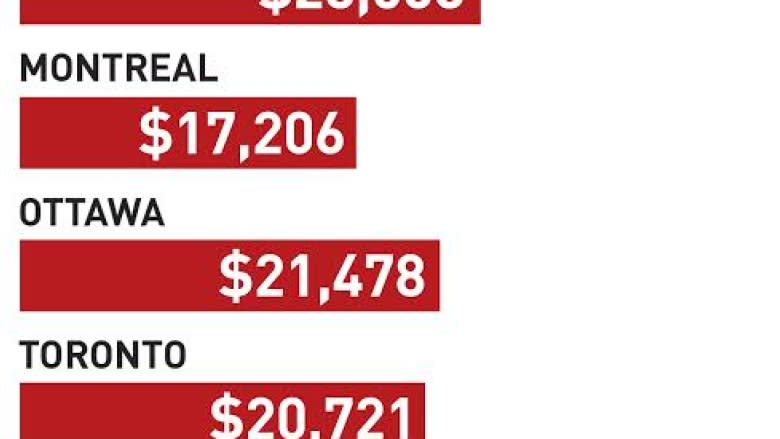Canadians' average debt load now up to $22,081, 3.6% rise since last year
The average Canadian now owes $22,081 in consumer debt, a figure that doesn't include any mortgages, debt monitoring firm Equifax says.
In a report released Wednesday, Equifax says the debt figure increased by 3.6 per cent in the third quarter of 2016 compared to the same period a year ago. All in all, consumer debt now stands at more than $1.7 trillion.
But while the average is rising, that figure belies an interesting paradox: Many people have little or no consumer debt, but those who do are borrowing more and more.
"The majority of consumers are actually decreasing their debt," said Equifax's senior director, Regina Malina, "but those who are still increasing it are adding larger amounts on average and by enough to increase the total levels.
"The fact is people who can afford to do so are buying more cars, spending more on housing and borrowing more," she added.
So far at least, they're managing to keep their heads above water. Equifax considers a loan to have gone delinquent when a borrower has not made a payment in more than three months. By that standard, the delinquency rate is still low — 1.14 per cent in the third quarter. That's up from 1.05 per cent at the same time last year, but still low in overall terms.
Much of the surge in delinquencies has come from oil-dependent provinces in Western Canada and Newfoundland and Labrador, Equifax said.
The good news is it appears that on the whole, affected people in those provinces have at least stopped digging themselves into deeper holes.
"What we are seeing in Western Canada and Newfoundland would be of more concern if people in the two regions hit hard by the oil bust were also piling on a lot more debt and they are not, especially in Alberta and Saskatchewan," Malina said.
- ANALYSIS: What were we thinking? Of course interest rates have to go up
"On average, Canadians across the country are managing their debt wisely, with the majority paying off their credit cards in full every month and few making only the minimum payments. We encourage them to continue to be budget-conscious heading into the holiday shopping period."
While the overall debt figure is ticking up, two specific types of debt are growing rapidly. Auto loans and instalment loans are showing significant increases of 7.8 per cent and 7.7 per cent year over year, respectively.

 Yahoo Finance
Yahoo Finance 


